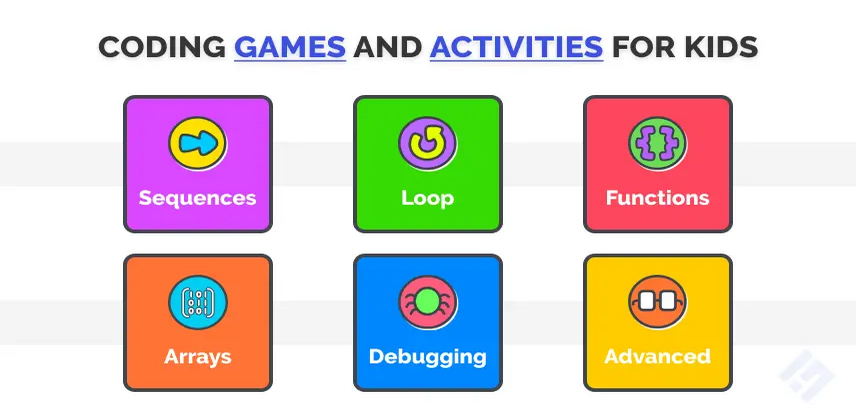In a world increasingly driven by technology, equipping our children with coding skills isn't just a good idea, it's becoming essential. But how do we transform learning code from dry textbook drills into exciting adventures? The answer lies in coding games and activities, carefully designed to spark a love for programming in young minds. Forget complex syntax and monotonous tutorials – we're talking captivating storylines, engaging puzzles, and the thrill of creating something unique!
Beyond the Benefits: Why Kids Should Code
Learning to code goes far beyond simply understanding how computers work. It fosters a host of valuable skills, like:
Critical thinking and problem-solving: Breaking down complex challenges into smaller, logical steps is a life skill that applies everywhere, from academics to personal endeavors.
Creativity and innovation: Building interactive worlds and characters allows kids to express themselves and experiment with their ideas, igniting their inner inventor.
Communication and collaboration: Many coding tools encourage teamwork and sharing, building valuable social skills in a tech-infused world.
Resilience and persistence: Debugging programs and overcoming challenges teach valuable lessons about grit and perseverance, skills essential for lifelong success.
Future-proof skills: Coding proficiency is increasingly sought-after across various industries, giving kids a competitive edge in a technology-driven future.
Unlocking the Coding World: Activities for Different Ages
The world of coding games and activities is vast and brimming with potential. Here are some ideas tailored to different age groups:
Ages 4-7:
Unplugged Activities: Start with the basics! Use colorful blocks or cards to represent commands like "move forward" or "turn left," and create sequences to guide a toy robot or even each other through a maze. This builds foundational logic skills in a tangible way.
ScratchJr: This free, visual programming app uses colorful blocks to let young children create animations and simple games. The intuitive interface and engaging characters make it perfect for little hands.
Kodable: Similar to ScratchJr, Kodable uses adorable robots and friendly narrators to introduce basic coding concepts like loops and conditionals. Kids can guide their robot friends through puzzles and challenges, learning by doing.
Ages 8-12:
Minecraft: This popular game is more than just virtual block-building. With mods and coding tools like "Blockly," kids can program custom behaviors for their characters, automate tasks, and even create their own mini-games within the Minecraft world, unleashing their creative potential.
Tynker: This platform offers a variety of engaging coding games and activities, from building robots and designing animations to creating interactive stories. With different difficulty levels and a variety of coding languages, Tynker grows with your child's skills.
LightBot: This puzzle game challenges kids to program a robot using light commands. Each level requires careful planning and strategic thinking, making it a fun and rewarding way to learn about algorithms and problem-solving.
Ages 13 and up:
CodeCombat: This immersive fantasy RPG teaches coding through an exciting storyline. Kids learn JavaScript by writing commands to control their character, conquer obstacles, and defeat enemies. The engaging narrative and challenging levels keep them hooked for hours.
Khan Academy: This free online platform offers comprehensive coding courses in various languages like Python, Java, and HTML/CSS. With interactive exercises, personalized learning paths, and even college-level courses, Khan Academy is a valuable resource for serious young coders.
Unity: This powerful game engine allows kids to create their own 3D games. With its visual scripting system and vast learning resources, Unity is a gateway to advanced game development for teens with a passion for programming.
Coding Beyond the Screen: Making it Fun in Everyday Life!
Coding doesn't have to be confined to screens. Here are some ways to incorporate it into
everyday activities:
Cooking: Create a "recipe code" with simple instructions for a favorite dish.
Music: Use colored beads or paper to represent different notes and create a melody sequence.
Exercise: Design a workout routine with coded workout commands like "jump 10 times" or "hold plank for 30 seconds."
Remember, the key is to make it fun! Let kids explore their interests, encourage experimentation, and celebrate their achievements. With the right resources and a positive attitude, coding can become an exciting adventure for kids of all ages, unlocking their creative potential and paving the way for a bright future in the tech world.
